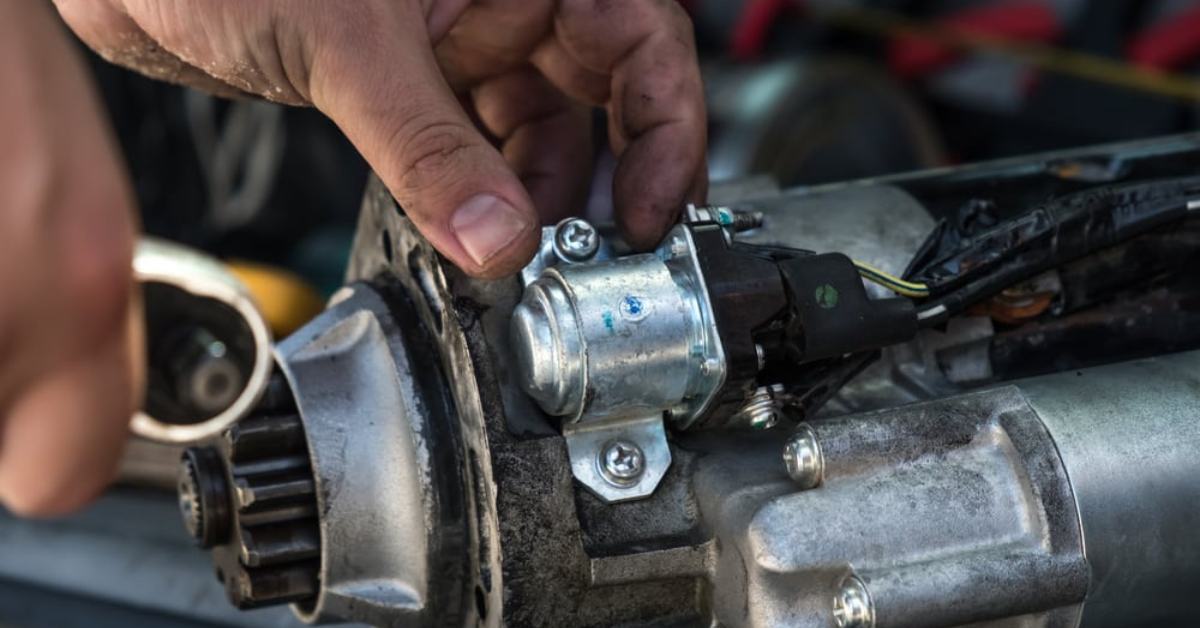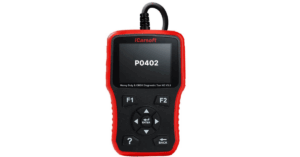When your car refuses to start, it could be a sign of a bad starter. This is one of the most common problems drivers face, and it can be tricky to diagnose correctly. Sometimes, you might turn the ignition key and hear nothing, or you may notice the engine waking up but failing to fully engage.
These symptoms can confuse drivers because they can also be related to other issues in the starter system. If you’ve encountered these troubles, it’s important to look for specific signs that will help you tell a bad starter apart from other problems. While a bad starter can be a challenging fix, recognizing the symptoms will help you address the problem and get back on the road quickly.
What Is A Starter?
A starter is a small but vital motor in your car that’s powered by the battery to get your engine running. It works with the starter system, where components like the relay and cables ensure that power is properly transmitted through the vehicle.
The starter relies on electrical connections, such as the wiring, ignition switch, and even the transmission gear position, to do its job effectively. If any of these parts malfunction, the starter may fail to engage, leaving your car unable to start and possibly needing a tow.
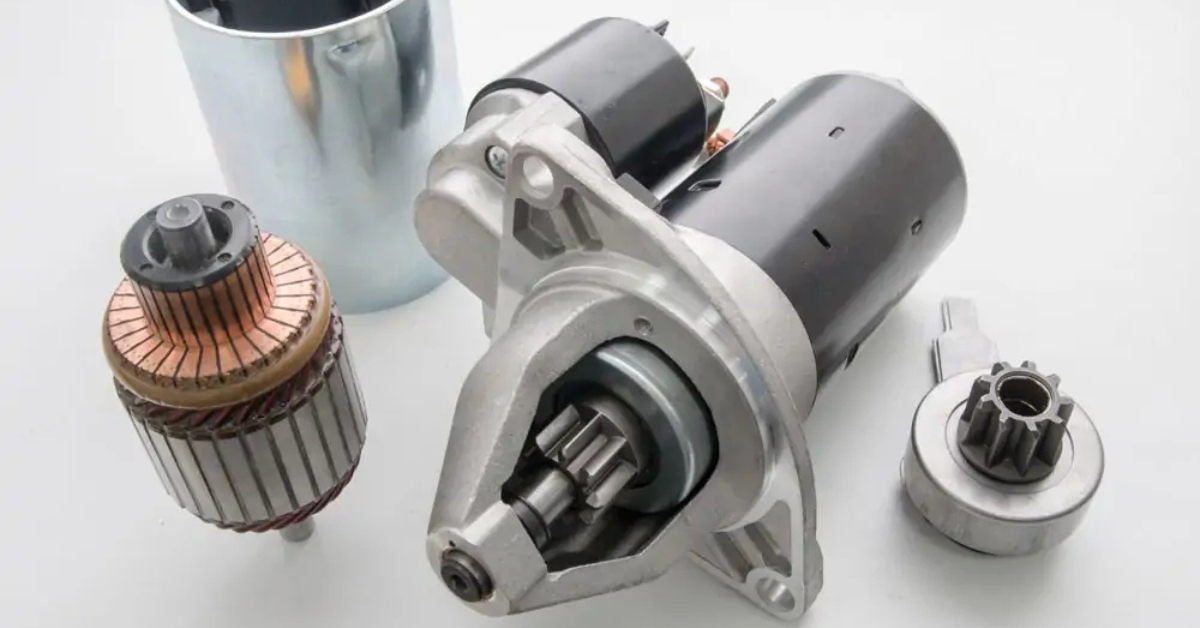
Understanding this simple yet crucial piece of your vehicle’s operation can help you identify why your car might not be working, whether it’s due to a malfunctioning computer, a stuck clutch interlock, or other reasons. Without a fully functional starter, the car’s engine won’t turn over, leaving you stuck and potentially needing to call a truck for assistance.
What Are Common Bad Starter Symptoms?
When Something Sounds Off
A bad starter can cause clicking, whirring, or grinding sounds when you turn the key or press the start button. These symptoms usually indicate that the starter is struggling to engage or is near death. If these noises occur, it could be a sign that your starter is malfunctioning and may need replacing.
Smoke Is Coming From Your Car
If you notice smoke coming from under the hood, it could be a sign of electrical issues within the starter system. This might happen due to blown fuses, short circuits, or overheating components.
When you turn the key, you might see or smell smoke, which indicates a problem. If this occurs, it’s important to call a mechanic for help, as it’s a clear sign that something in the starter system is malfunctioning.
You’ve Got Lights but No Action
If your dashboard warning lights turn on, but the engine doesn’t crank or spin, it’s a classic sign of a bad starter. The power is reaching the dashboard, but the starter isn’t engaging, causing the problem.

Oil Has Soaked the Starter
For RWD or FWD vehicles, if oil from a leak soaks the starter, it can lead to premature failure. This often happens when oil drips onto the starter, possibly due to a leak near the engine, transmission, or exhaust manifold.
To address this issue, you’ll need to locate the oil leak under the hood and replace any faulty parts. Ignoring this can lead to expensive repairs or the need for a jumpstart, tow truck, or even replacing the starter system entirely.
Your Engine Won’t Crank
When the engine won’t turn over, even with a jumpstart, it’s a symptom of a failing starter. The engine may crank slowly, drag, or struggle to spin. In this case, you might need roadside assistance or help from an Auto Care certified technician to fix the issue.
What Causes Starter Problems?
- A bad starter can result from many problems in the starter system.
- Loose wiring or dirty connections disrupt the electrical flow, preventing the power needed for the engine to crank.
- Corroded circuits, resistance, or weak cables can lead to failure, especially with a battery suffering from corrosion, overheating, or damage due to age.
- Starter parts responsible for conducting and distributing energy, such as the relay and cable, wear out over time from wear and tear, leaving the starter inoperable.
- Oil leaks or other leaking fluids near the engine can coat starter components, causing further damage that requires repair or replacement by a technician.
- Regular maintenance can help prevent these problems and extend the starter’s life.
How Do You Diagnose And Troubleshoot Starter Problems?
Look under the hood
Inspect the battery for weak or dead conditions, and ensure the battery cables are in working order. A faulty connection or damaged cables can cause problems with the starter, preventing the car from starting properly.
Tap the Starter
If your starter isn’t working, try tapping it gently with a hard object. This can help re-establish contact between the electrical components and restore power to get the system back up temporarily.
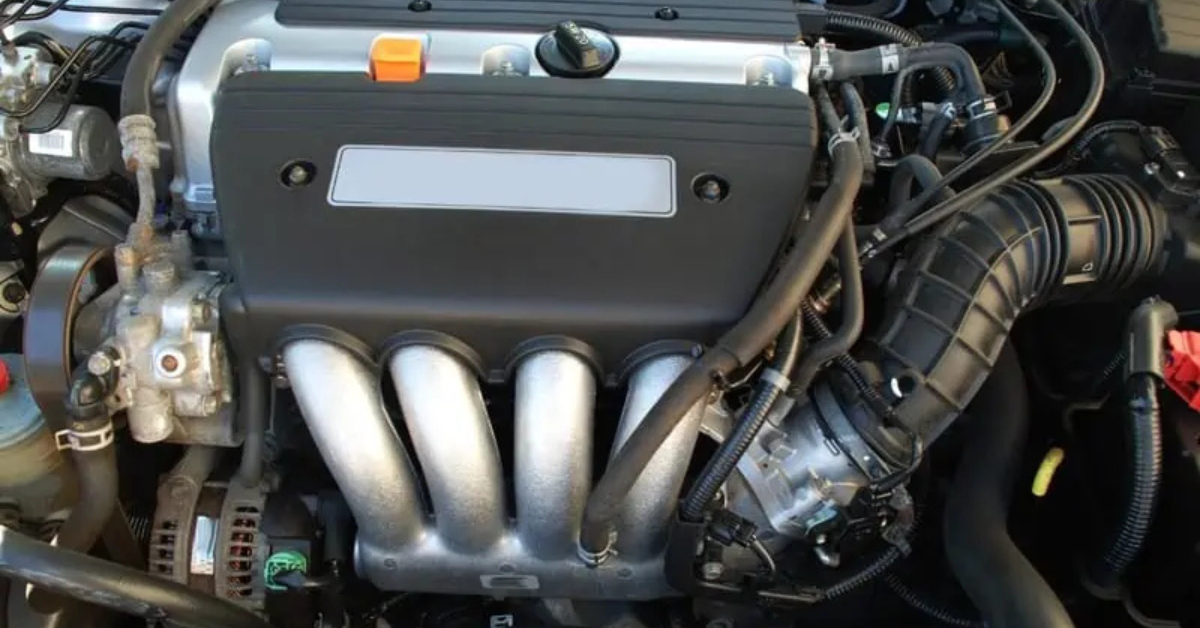
While this is a quick fix, it’s only a short-term solution, and you should visit a service center to address the issue properly. Think of it like tapping an old TV to bring it back to life—it works but doesn’t solve the root problem.
Adjust the Transmission
If the car won’t start, try shifting the automatic transmission from park to neutral. Sometimes, a technical glitch with the neutral safety switch can cause the issue. Starting the car in neutral may bypass the faulty connection and allow the vehicle to start. If this works, have the switch checked to prevent future problems.
Check the fuel gauge.
If your starter isn’t working, the issue might be as simple as an empty gas tank. Check your fuel gauge—if it shows empty, make sure the tank is actually full. If the gauge is malfunctioning, tapping it could provide a temporary fix, but you’ll need a qualified technician to inspect and repair it properly.
If the starter is still not working, consider jumpstarting your car or calling Auto Care for assistance. If the issue persists, your car might need to be towed and repaired by experienced technicians.
How to Prevent Starter Failure
| Prevention Tip | Details |
|---|---|
| Regular Maintenance | Perform routine checks to ensure your vehicle is in good condition. |
| Inspect Electrical Connections | Ensure connections are clean and free of corroded wires or loose parts. |
| Check the Battery Health | A weak or dying battery can affect starter performance. |
| Watch for Oil Leaks | Prevent oil leaks from soaking the starter and causing internal damage. |
| Inspect Transmission | Look for wear, rust, or debris that might affect starter operation. |
| Listen for Unusual Sounds | Grinding or clicking sounds can indicate early starter issues. |
| Monitor Voltage Levels | Ensure your vehicle’s electrical system provides the right amount of power. |
| Regular Testing and Replacement | Test and replace any faulty components to prevent starter failure. |
| Fix Short Circuits or Electrical Issues | Address short circuits or damaged electrical components promptly. |
Read More:
Honda Odyssey Firing Order: Complete Guide with Diagram
8 Reasons Why Led Flashers Work But Brake Light Doesn’t
How To Start A Car With A Bad Starter
1. Safely Park Your Car

To start a car with a bad starter, first park off the road in a safe spot. Ensure you’re clear of traffic flow. If your car has a manual transmission, shift it to neutral. Set the parking brake to prevent movement. Make sure your car is stationary and secure before attempting any fixes.
2. Find The Starter Motor
The first step in addressing a bad starter is to find the starter motor. To do this, pop the hood and locate the metal cylinder that is part of the starter system. It’s usually a smaller cylinder positioned near the exhaust system, but the exact location may vary depending on the make and model of your car.
Be careful when touching the area around the exhaust, as it can be hot. The starter motor will have electrical terminals connected to the battery. Look for signs of a short or spark, which can indicate a problem with the starter motor or its electronic systems.
3. Try The Tapping Method
If the starter motor isn’t working, one common DIY repair is the tapping method. This technique, also known as percussive maintenance, involves gently tapping the starter motor with a hammer or any other hard object. This can help unstick the starter brushes and may allow the system to engage temporarily.
However, this is just a short-term fix. The starter may have brittle magnets or damage inside the starter housing, which can worsen with this method. It’s best to have the starter repaired or replaced if this doesn’t work.
4. If Tapping Fails, Prepare To Jump-start Your Car
If the tapping method doesn’t work, the next step is to jump-start your car. You will need a working vehicle with a charged battery and a set of jumper cables. First, make sure to consult your owner’s manual for the correct instructions specific to your car.
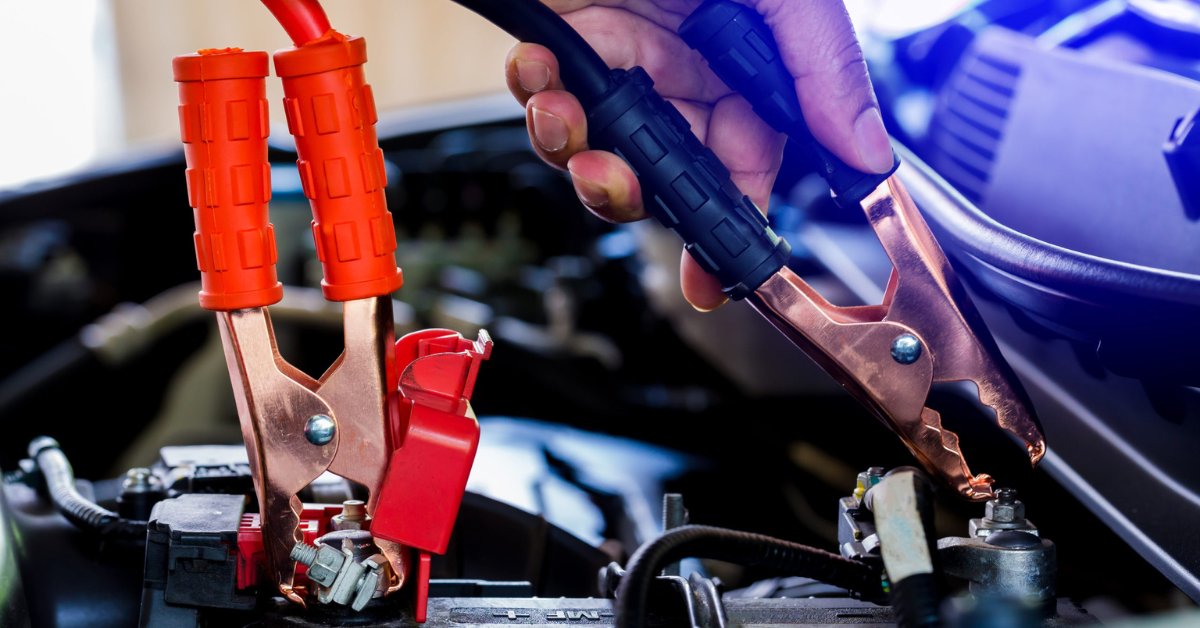
The procedure generally involves connecting the positive terminal of the dead battery to the positive terminal of the live battery using the red jumper cable. Then, connect the negative terminal of the working vehicle’s battery to a metal surface on the non-functioning car (not the negative terminal of the dead battery).
Check for any corrosion or loose connections before clamping the cables to ensure a secure connection. Wear gloves to protect yourself from sparks. Once connected, start the working vehicle and allow the dead battery to charge for several minutes before attempting to start the inactive car. This should help provide the necessary power to get your car started.
5. Use A Working Car To Charge The Battery
If your car still doesn’t start, you can use the working vehicle to charge the dead battery of the inactive car. After ensuring that the jumper cables are tight and secure, let the working car run for at least 10-15 minutes. This will allow the dead battery to charge through the jumper cables, providing enough energy for the inactive car to start.
Once the battery has had time to charge, try starting the car again. If the car starts, you can let it run for a while to recharge the battery. If this doesn’t work, you may need to consider repairing or replacing the battery or the starter motor.
6. Attempt To Start Your Car
Once you’ve charged the dead battery using the jumper cables and ensured they are properly connected to the live battery, it’s time to attempt starting the car. Turn the ignition and see if the engine starts. The power from the live battery should help bypass the dead battery, giving enough energy to turn the engine over.
If the car still doesn’t start, check the voltmeter to ensure the battery is receiving adequate power. Rust or corrosion on the terminals can interfere with the current flow, so be sure to clean the battery terminals if necessary. If the engine cranks but doesn’t start, the problem may lie with the starter motor rather than the battery.
7. Disconnect Your Vehicle And Drive To Your Nearest Repair Shop
If the car has successfully started and is now running, it’s time to disconnect the jumper cables. Begin by removing the negative clamp from the negative terminal of the working vehicle and then the positive clamp from the positive terminal of the dead battery. Ensure that both clamps are removed carefully to avoid any sparks or short circuits.

Drive the jumped car to your nearest repair shop for further inspection. This is a temporary solution to get your car running, but the underlying starter problem still needs to be addressed. Visiting a professional service will ensure that experienced technicians can diagnose and fix the problem at a reasonable price and within a reasonable time frame.
Replacing Your Starter: DIY vs. Professional Service
Replacing your starter can be a DIY job if you have the right mechanical skill and tools like a car jack and socket wrenches. However, it involves working with electrical components and hard-to-reach parts, which can be challenging for the inexperienced.
If you’re unsure, hiring a professional mechanic is a safer and more reliable option. The cost of starter replacement typically ranges from $300 to $600, including parts and labor. While DIY may save on labor costs, a professional ensures the job is done correctly and efficiently.
FAQS
How do I know if I have a bad starter?
If you hear a clicking noise when turning the key or pressing the start button, it could be a sign of a bad starter. Sometimes, the starter may die without any sound, but if you hear a whirring or grinding noise, it means the starter is struggling and might be near its impending death. Always listen for unusual sounds when trying to start your car.
Can a bad starter still crank?
Yes, a defective starter drive can still cause the pinion gear to freewheel during engine cranking. This can result in a whirring or whining noise as the pinion gear isn’t engaging with the flywheel properly, causing the engine to fail to crank.
What are two symptoms that would indicate a faulty starter solenoid?
Two common symptoms of a faulty starter solenoid include a clicking sound or repeated clicking noise when you turn the ignition key, suggesting a bad solenoid. Another sign is no response or no sound or movement when turning the key, which means the solenoid may not be engaging at all.
Additionally, intermittent starting or inconsistent starting can indicate a gradually failing solenoid.
How long will a bad starter last?
An average starter can last anywhere from 100,000 to 200,000 miles or around 80,000 to 100,000 starts. However, the length of time a bad starter lasts depends on various factors such as the engine design, the driving habits of the owner, and the conditions under which the vehicle is used.
How can I test my starter at home?
To test your starter at home, start by listening for a click sound when you turn the ignition key, which indicates a working starter motor. Next, perform a visual inspection of the starter. You can also use a multimeter to test the battery and check the voltage.
For a more thorough check, test the starter solenoid and consider performing a bench test on the starter motor.

Mian Hashir is a passionate automotive enthusiast and the lead author at Car Garagee, a website dedicated to providing in-depth car reviews, maintenance tips, and the latest news in the automotive world. With years of experience in the industry, Hashir combines his technical knowledge with a love for cars to deliver insightful and engaging content. Whether you’re a car owner or a curious reader, Mian Hashir’s articles help readers make informed decisions, from choosing the right vehicle to understanding how to keep it in top condition.

